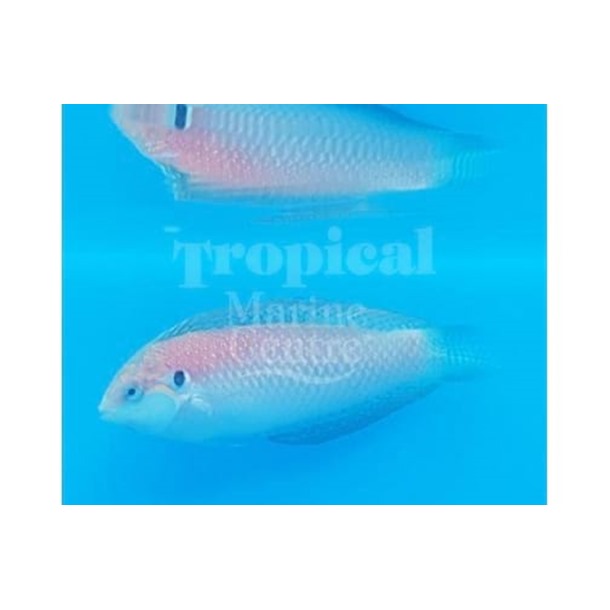Kuiter's Leopard Wrasse
You will earn 78 Points
The Kuiter's Leopard Wrasse is a highly-sought-after wrasse belonging to the genus Macropharyngodon. This small yet extremely ornamental wrasse is breathtaking, boasting the signature spotted pattern of the Leopard Wrasses. This Leopard Wrasse is a curious exception that demonstrates dentition (teeth arrangement) that differs from other Leopard Wrasse species.
Though notably smaller, the Kuiter's Leopard Wrasse shares many characteristics as larger tropical wrasse species. The Kuiter's Leopard Wrasse demonstrates colour variations within individuals based on gender and age and also begin life as female. Initial phase Kuiter's Leopard Wrasses have an orange-red background color with bluish-white leopard spots. They also have a small black spot just behind the eye and the opercular spot dons a whitish-blue halo. As the Kuiter's Leopard Wrasse develops into an adult male, the black spot behind the eye and the blue halo around the opercular spot disappears. A green and orange circle develops around the black opercular spot and orange becomes the predominant body color.
A 50 gallon or larger aquarium with well-established live rock and a mature sand bed several inches deep is recommended. The Kuiter's Leopard Wrasse is a sand wrasse that burrows into sandy substrate for protection. In the wild, Leopard Wrasses inhabit sand and rubble regions near coral reefs. To best recreate this habitat, be sure to provide large open spaces that allow access to the fine sand bed. The use of a wavemaker to simulate water movement near reef zones may also be a consideration. The Kuiter's Leopard Wrasse will do best when introduced as juveniles in groups of three or more. It eats small invertebrates (foraminiferans and amphiopods) that grow on live rock.
The Kuiter's Leopard Wrasse diet should include vitamin-enriched frozen mysis shrimp, vitamin-enriched frozen brine shrimp, and other meaty foods along with a high-quality marine flake and marine pellet food.
